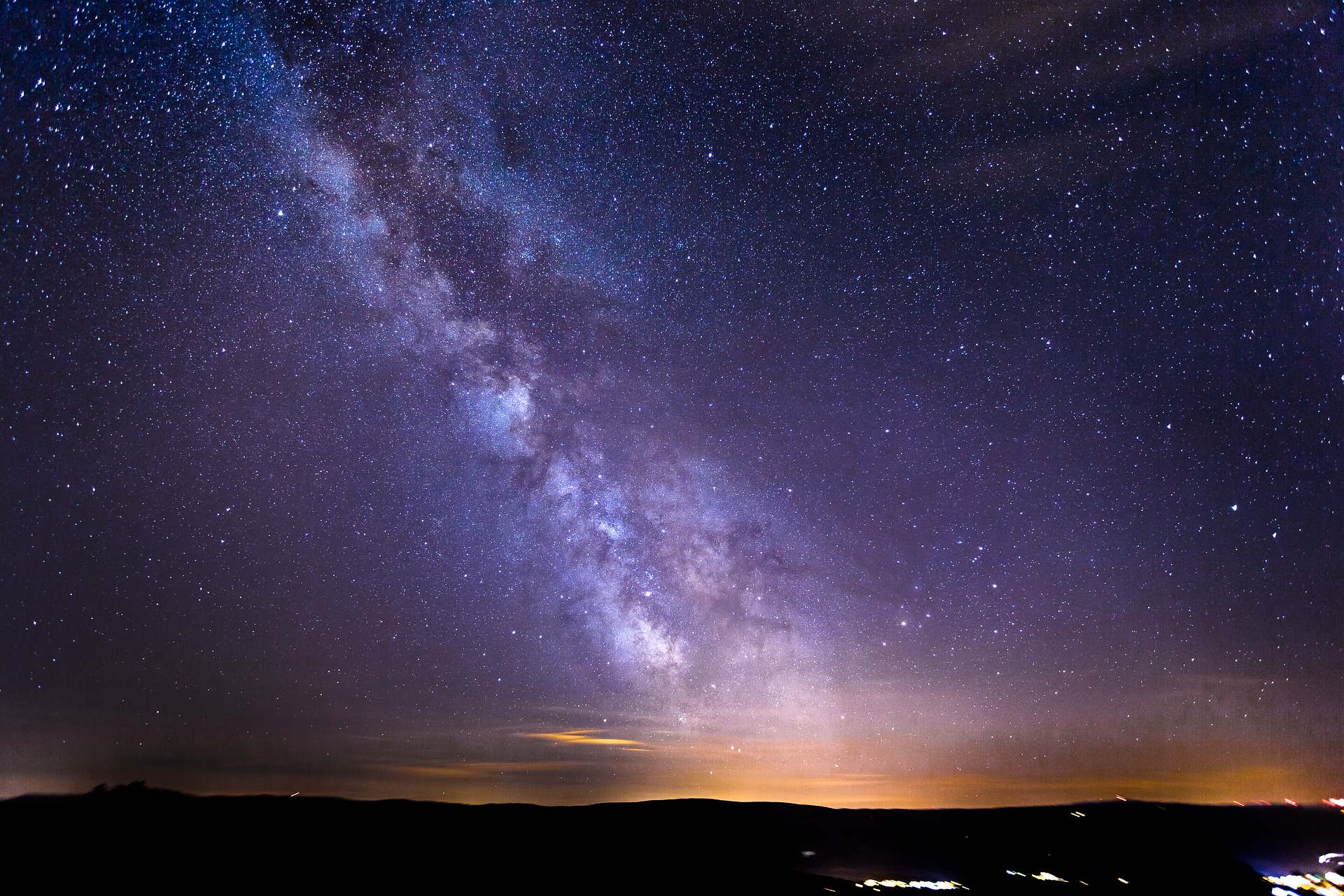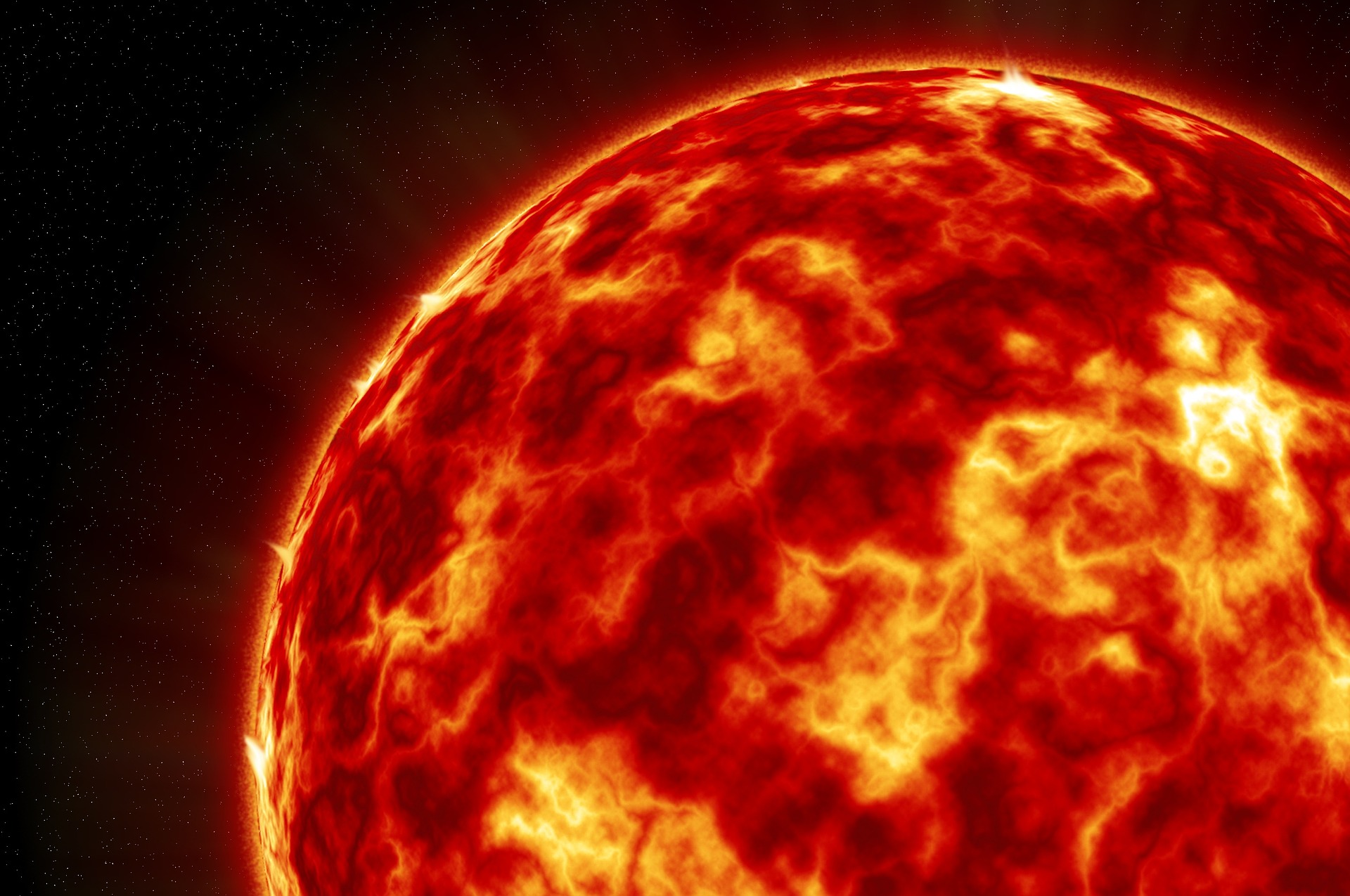Black Holes and Mysteries of the Universe – What Even Scientists Cannot Explain
 The first image of the black hole in galaxy M87 that appeared almost two years ago awakened the curiosity even of those who had little interest in astronomy. The object, located in a vast expanse of space that is hard to imagine, is reminiscent of a red-eye with a black pupil and is just one of the numerous supermassive black holes in the Universe. This was explained by Kastytis Zubovas, an associated professor at the Faculty of Physics of Vilnius University (VU) and an astrophysicist, in the podcast Science without Preaching (“Mokslas be pamokslų“). The scientist, whose field of research is black holes, explains how this exotic matter appears, disappears, and whether it can pose risk to humanity.
The first image of the black hole in galaxy M87 that appeared almost two years ago awakened the curiosity even of those who had little interest in astronomy. The object, located in a vast expanse of space that is hard to imagine, is reminiscent of a red-eye with a black pupil and is just one of the numerous supermassive black holes in the Universe. This was explained by Kastytis Zubovas, an associated professor at the Faculty of Physics of Vilnius University (VU) and an astrophysicist, in the podcast Science without Preaching (“Mokslas be pamokslų“). The scientist, whose field of research is black holes, explains how this exotic matter appears, disappears, and whether it can pose risk to humanity.
Black holes – mind-boggling dimensions and fantastic ideas
According to the professor, black holes can be perceived in two ways. On the one hand, they are extreme structures in space from which there is no escape even for light travelling at the highest possible speed in the Universe, and which have such exotic properties as spatial and temporal distortion. “Observations and studies of these properties can help to verify the predictions of the theory of relativity or help to discover as-yet undiscovered and unknown physics. We’re talking about such fantastic ideas as time travel or travel to very distant spaces and places at a speed faster than light,” he said.
On the other hand, according to Zubovas, black holes are real astrophysical objects, and the phenomena that occur around them affect very large-scale processes in space. In this respect, a black hole is important not as an object with extreme phenomena but as a massive object with very strong gravity, so if any matter falls into the black hole it loses a great deal of energy, it usually emits the energy. “This creates a source of extraordinarily energetic radiation in the galaxy. I examine this second aspect of black holes exploring how such radiation that occurs near black holes can affect the evolution of galaxies.”
Part of the research by the astrophysicist is related to the supermassive black hole Sagittarius A* at the centre of the Milky Way. “It is called Sagittarius because our Galactic Centre is in the direction of the constellation of Sagittarius, whereas A and * are the terms derived from the nomenclature adopted by the observations of the radio wave range. Sagittarius A* is the closest supermassive black hole to the Earth, so it is convenient for various studies that allow for a comparison of different processes and phenomena with those of other black holes, objects and changes over time,” the scientist explained.
Size-wise, astrophysics distinguishes two types of black holes: supermassive and stellar-mass black holes. Supermassive black holes are about 100,000 times larger than the Sun and can be found at the centres of most galaxies. The most massive black holes are dozens of billions of solar masses. The largest stellar black holes are about 150 times the Sun’s mass and the smallest are only three to five times the Sun’s mass.
“Stellar-mass black holes appear as massive stars and end their lives by bursting with supernova explosions. There should be many of these black holes in each galaxy, including in the Milky Way. Some of them can be detected if they are in binary systems and interact with another star,” Zubovas added.

The first image and secrets of black holes
Almost two years ago, the image of M87*, a black hole located in the heart of galaxy M87, featured a dark region surrounded by a bright glow, which sparked the imaginations of quite a number of astronomy fans. However, Zubovas explains that this is glowing gas that rotates around the black hole and the light emitted by gas that reaches us. The dark region at the very centre of the black hole is its so-called shadow. Photons from this region cannot reach us, because they eventually fall inside the black hole.
“The photon shadow radius is slightly larger than the so-called event horizon radius – the radius of a single-sided surface. The latter is the boundary for entering the black hole, but once you fall through the event horizon there is no way back. A fairly good illustration of what a black hole looks when you are near it is provided in the film Interstellar. It is a hole around which the accreting gas forms a rotating flattened disk. Because of the very strong gravity, the photon trajectory is distorted so that we can also see the part of the disc that is behind the black hole, so it seems like it is not a flattened disc but a curved formation,” the scientist explained.
According to Zubovas, one of the most intriguing mysteries of black holes is what awaits beyond the event horizon. So far, it is not known what lies beyond it, although one of the initial predictions – stating that when a huge mass is compacted, a structure such as a black hole covered with the event horizon should appear – was expressed in 1916, just a year after the publication of Einstein’s theory of relativity.
“For a long time, it was believed that these were only theoretical mathematical solutions, but over time came understanding that such formations were real and Rogers Penrose, who won the Nobel Prize for Physics last year, has made a significant contribution to this. Speaking about the prediction of the general theory of relativity, the crossing of the event horizon should not seem to be an exceptional event. By approaching a dark object in flight until the object occupies half of the field of vision an observer will see only darkness on one side, because the photons no longer reach the observer from there, whereas the remaining Universe will appear on the other side, because the photons reach the observer from there as they also fall into the black hole,” the scientist explained.
However, this course of events runs counter to the law of quantum physics, according to which the value of quantum information cannot disappear. “This information may remain trapped in the black hole, but again theoretical models show that black holes can evaporate and disappear, in which case the information should also disappear. One of the possible explanations for the disappearance of the matter that falls into the black hole is the so-called firewall that exists immediately beyond the event horizon – a hypothetical region of very high temperature that simply destroys everything,” the astrophysicist commented.
Scientists disagree about the reality of this theory, as it contradicts the above-mentioned prediction of relativity theory, which states that the event horizon is not a unique place for a local observer who falls into a black hole. According to Zubovas, this discrepancy was observed and formulated about 50 years ago, but any unequivocal solution is still absent.
“This is one of a few areas where the predictions of quantum physics and general theory of relativity are incompatible with each other, and this is very interesting, because both predictions have passed all experimental checks, which means that individually they are very good descriptions of reality. However, both cannot exist at the same time, but we do not have yet the possibility to verify this in practice; maybe we will succeed in the future. This is one of the most fascinating areas of research in fundamental physics at the moment,” the scientist said.

Hypothesis of the origin of black holes
According to the astrophysicist, currently it is known that a black hole forms following stellar death, but the origin of supermassive black holes still raises questions. Knowing that a black hole may increase over time, if matter falls into it or if the black hole merges with another black hole or “consumes” any star that accidentally falls into it, there are several hypotheses explaining the formation of supermassive black holes. One of these is that about 100 million years after the Big Bang, when the first stars in the Universe were formed and subsequently exploded, the stellar black holes became supermassive due to the large amounts of gases in the Universe.
“The life of these stars was quickly over and they became supernovas – well, over a period of millions of years, but in a much shorter time than the current age of the Universe which is 14 billion years. In the primordial Universe there was much more gas and its density was higher than at present, because the Universe has expanded over time and there were not so many stars that consume gas, so some black holes could have fallen into dense gas deposits, which, over time, could have increased to millions or hundreds of millions and more of solar masses,” the astrophysicist explained as the primary hypothesis.
According to him, this hypothesis can fully explain the appearance of Sagittarius A* and other black holes observed in the surrounding Universe, but there are considerable doubts about other existing black holes. “They can also be found in very distant galaxies, from where light has travelled to us for 13 billion years or more, so we see these galaxies from the times when our Universe was several hundred million years old, which means the supermassive black holes sometimes reaching a mass of over one billion suns have already existed. For a black hole of such a size to form in less than 600 million years is difficult.”
Therefore, there is a hypothesis that in the primordial Universe the first stars themselves, due to certain circumstances, were much heavier formations reaching a mass of 100,000 suns and could simply break down into smaller masses, so they became similar to stellar formations and in 100,000 years shrank and became black holes reaching a mass of 100,000 suns. The third hypothesis Zubovas mentioned suggests that the first stars were formed in clusters, as they are today, and then exploded and merged with each other.
“In clusters, where many stellar explosions take place leaving black holes, they had more chance to merge. Hundreds of thousands of black holes in a cluster of millions of stars merge more quickly than one black hole could grow by consuming the gas around it,” he said.
The disappearance of black holes explained by theories
Although no one has yet seen any evaporating black holes, the theoretical basis and model for this process is based on well-understood laws of quantum physics and the theory of relativity, which describe the whole process. Since, according to Zubovas, the vacuum is not completely empty according to quantum physics, certain pairs of particles constantly pop out in the vacuum from nowhere and immediately annihilate each other.
“We can’t record them, but they are there. If these two particles appear near the event horizon of a black hole and one of them falls into the black hole, they cannot annihilate each other. So, particles repelled by the black hole and carrying energy must constantly appear near the black hole, and various calculations show that the energy is brought out of the black hole,” the scientist said.
According to the astrophysicist, we can imagine that a black hole is of a certain temperature and like any object with a temperature it should emit irradiation – the more massive the hole, the lower its effective temperature and the smaller the radiation. Therefore, at present, the black holes that we are aware of in space gain more weight by absorbing photons passing through than they lose weight because of the phenomenon called Hawking radiation.
“However, in the course of time there is less and less energy in the Universe, its density and number of photons are decreasing, and massive black holes start to disappear because the Hawking radiation is becoming stronger than the factors driving the black holes’ expansion. All black holes with a mass greater than approximately 100 million tonnes should have evaporated by now. In the distant future, the stellar black holes should evaporate one by one and, later, supermassive black holes too, but this will happen after a much longer period than the present age of the Universe – we are talking about hundreds or thousands of billion years,” the astrophysicist explained.
Future plans and the issue of the threat to humanity
According to Zubovas, the prevailing myth that a black hole pulls in everything around it is wrong, because a black hole is an object devoid of free will and behaves only according to the laws of physics, so it doesn’t tug at anything on purpose and is a risk only to objects within close proximity. “If we replaced the Sun with a black hole of the same mass, the planets would continue to fly in their orbits, except that in the absence of the source of light everything would freeze and there would be no life. However, the gravity would not change – the black hole is simply passive and a very compact object for its mass, which does not specifically pull in the surrounding matter unless the matter falls into it on its own.”
Even the supermassive black hole that is closest to Earth, Sagittarius A*, does not pose a risk to humanity. This is 25,000 light years away, Zubovas said, and since the Sun is in the Milky Way galaxy disk, a large amount of gases and dust protects it from any radiation which theoretically could be dangerous. There is no threat either from stellar black holes, which are abundant in the galaxy.
“Estimating the number of stars that have formed and died in the history of the galaxy, there could be about 100 million stellar black holes in the Milky Way alone. On the other hand, there are about 100 billion stars in the Milky Way, so we should be able to find at least one stellar black hole per thousand stars in such huge space. If there are over four light-years to Proxima Centauri, the star system and closest planetary system to the Solar system, then it is probably about 40 light-years to the nearest black hole, which means that there is practically no risk of the black hole appearing in the Solar system,” the professor revealed.
In order to increase scientists’ knowledge about black holes and the processes taking place inside them, it is planned to set up and improve space and land observatories in the near future. According to Zubovas, these will allow us to detect black holes of several million solar masses, understand their diversity in the primordial Universe and help select which of the theoretical models of their origin mentioned above are correct. Another project is the expansion of the Event Horizon Telescope (EHT), which has enabled the first image of a black hole to be taken by connecting a global array of telescopes.
“Telescopes located in the Canary Islands, Hawaii, South America, the continental USA and even Antarctica use very long-baseline interferometry for imaging. This allows for observations of an object that are made simultaneously by many radio telescopes to be combined, emulating a telescope with a size equal to the maximum separation between the telescopes. This is just enough to capture images of two supermassive black holes. All other black holes are still too small, so the idea is to add one or more space observatories to the EHT. These could fly 10,000 or 100,000 kilometres away from Earth. By connecting all of the data, we would emulate a telescope with an effective diameter of 100,000 or a million kilometres,” Zubovas said.
With the help of such telescopes, images of smaller objects will be obtained, whereas a space observatory, according to the astrophysicist, is very useful because the telescopes on Earth are stationary in relation to each other, so the number of directions for observation is limited. “In a flying space observatory, meanwhile, observations from many more directions are available, which would also improve the resolution of the images,” the scientist commented.